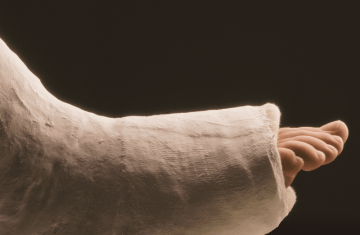I always feel like I should do a little disclaimer before any recommendations for sleep. Sleep is not only so specific to the individual, it also relies on many different factors that all come together and contribute to a good nights sleep. Eating a banana will not magically give you or your little one an amazing nights sleep tonight, sorry. However, when looking at sleep or lack of, sometimes looking at what is eaten in the hours leading up to bedtime can really help. And it’s not just toddlers and children who can benefit from this advice, knowing the effect certain foods can have on the body is really beneficial for anyone that sleeps, so that’s basically everyone.
I thought I’d begin with the one food that everybody has an opinion on, cheese. Does it give you nightmares? Apparently not. There is very limited research that suggests eating cheese before bed is more likely to cause nightmares or night terrors, but I’d always say it’s preference and if you feel cheese doesn’t sit well with you or child before bed, then give it miss. So yes, that weird dream you had when you were flying about riding a unicorn, you were probably going to have anyway, regardless of the amount of cheese you consumed that evening.
Having said all that, the stronger the cheese, the more tyramine it contains. Tyramine is actually an amino acid which can disrupt sleep as it can increase alertness and therefore make it harder to fall asleep. More milder cheeses, like a cheddar, would be a better option. It’s also worth noting that aubergines and tomatoes contain high levels of tyramine too.
Wholegrains are a great option as a pre-bedtime snack as they actually trigger the release of serotonin, helping make your little one feel sleepy. Lots of cereals contain wholegrain, but just be cautious of the sugar content of some cereals, especially before bed. And its this sugar you want to stay away from really, especially cake and sweets, as the high levels of sugar really act as stimulant. So if your little one has a treat, earlier in the evening may be a better option in oppose to near to bedtime.
Bananas are a great supper idea, as they contain an amino acid called tryptophan, which can help regulate sleep cycles. Bananas also contain magnesium, which is a real buzz word in the health community at the moment, but magnesium can help muscles relax at bedtime. Mixed with yogurt or on some wholegrain toast would be a great pre-bedtime snack.
Dairy products such as milk and yoghurts are great as they contain nutrients which help the body to produce melatonin, the sleep/wake hormone. Just keep an eye on any sugar content in yoghurts, as the higher the sugar, the more likely it will be to act as a stimulant, which is the opposite of what you are aiming for!
Foods to watch out for are cucumbers and watermelons. Whilst great and healthy snacks, they can act as a natural diuretic, so if eaten in a large quantity before bed, your little one may be awake more often needing the toilet or could have a leaking nappy. It’s also worth thinking about citrus fruits, as these can really exacerbate acid reflux. Whilst healthy and high in vitamin C, again, offering these earlier in the afternoon could help stop them causing any unwanted side effects.
Supper can be a great idea for toddlers and older children, as it not only helps them feel fuller overnight, but by giving the right types of foods, it can also be an opportunity to increase their intake of foods which can help with their sleep.
Great supper ideas are:
wholegrain cereal and milk
peanut butter on wholegrain toast
natural yoghurt and banana
mild cheese on wholegrain crackers
As I said at the start of this post, eating these foods before bed will not guarantee a good night sleep (if only), and don’t believe anyone who tells you otherwise. But sometimes, making small tweaks, and really looking at diet in the lead up to bedtime can have a big impact on not only the quantity but also the quality of sleep.




